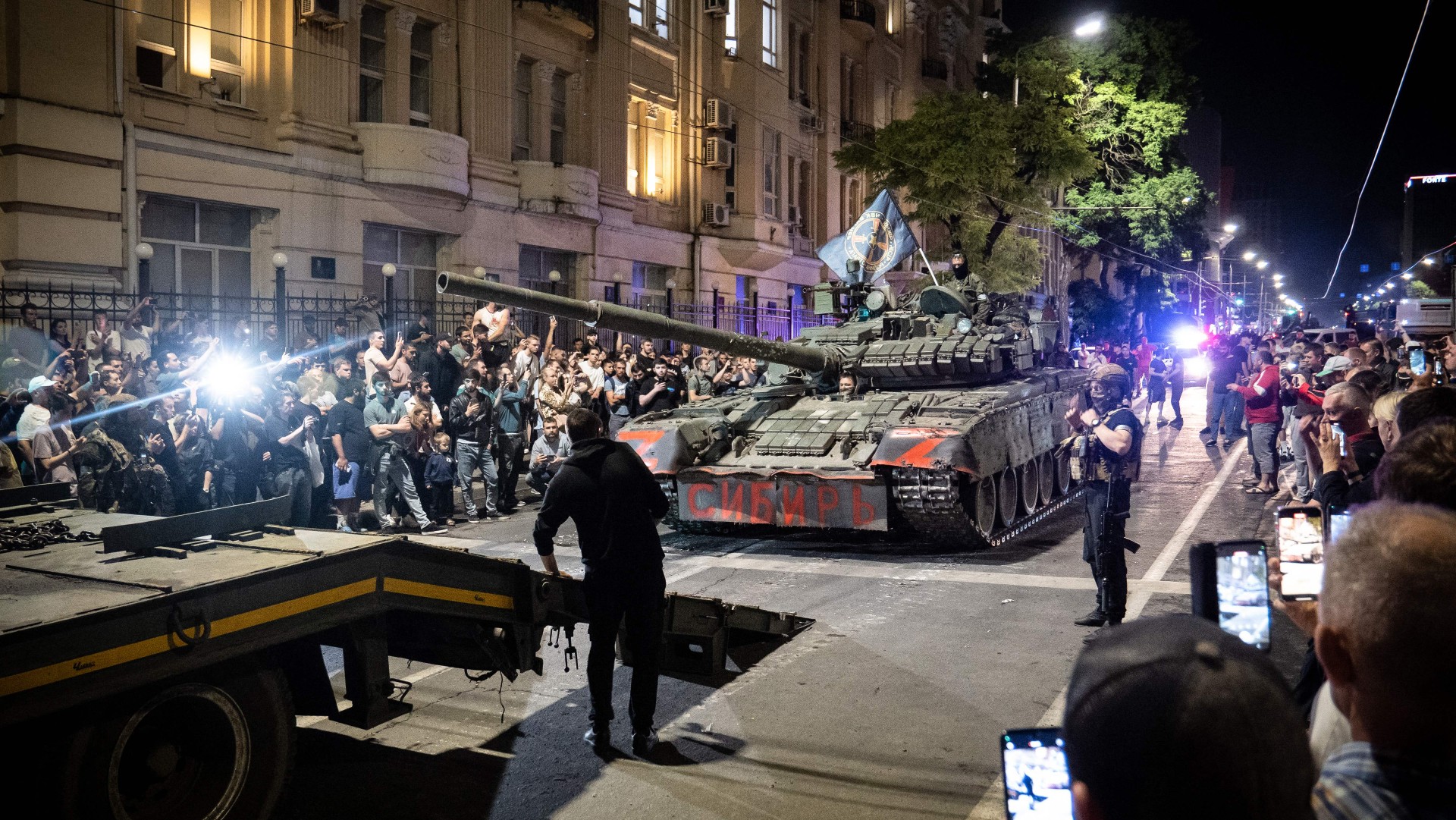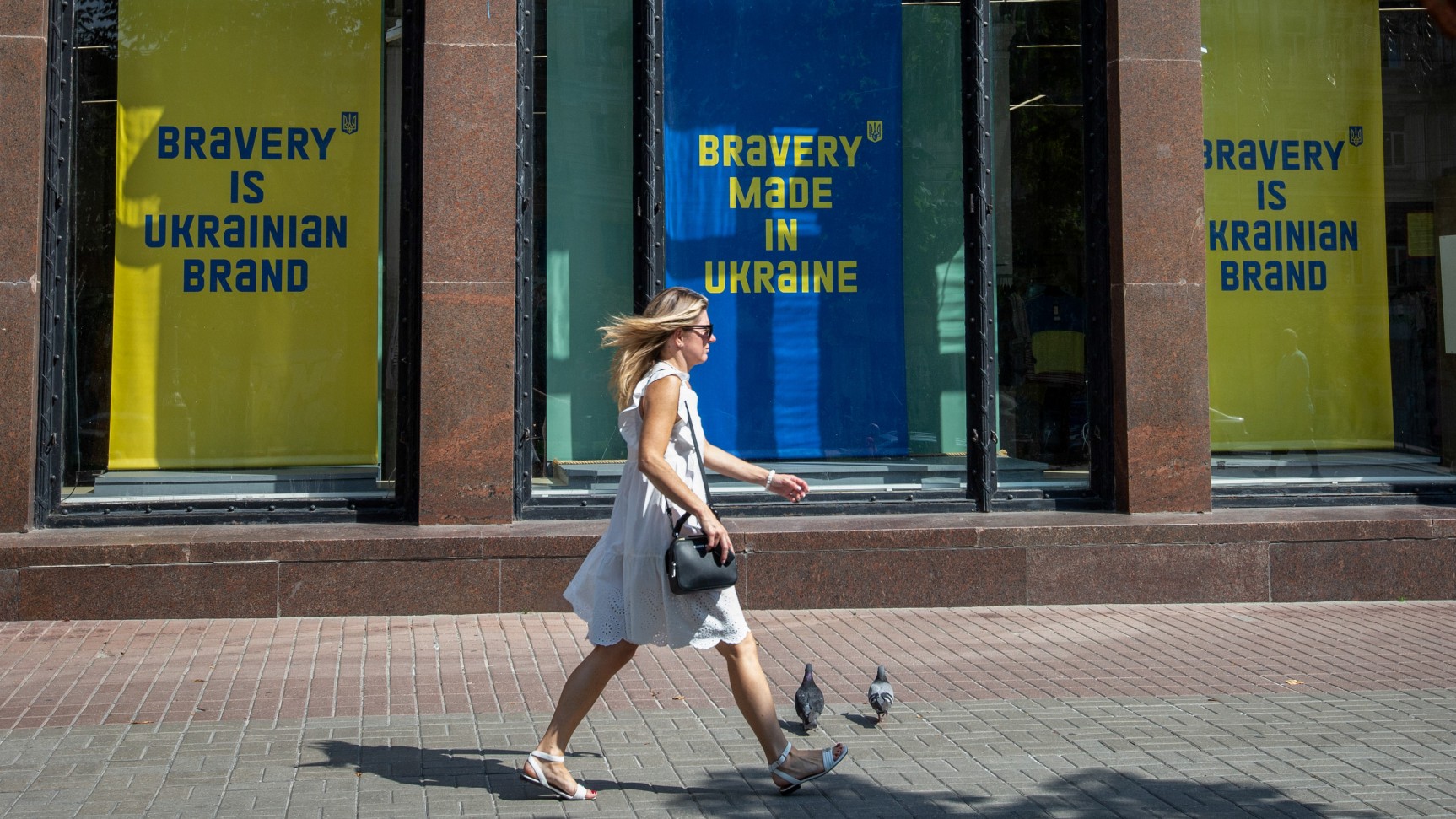Hellfire ‘Ninja’ missile is part of a scary new generation of unregulated weapons
Combining new weapon systems with artificial intelligence would be nightmare scenario, warns security expert

Peter Lee, professor of applied ethics, says treaties are needed to limit futuristic weapons.
The recent killing of al-Qaeda leader Ayman al-Zawahiri by CIA drone strike was the latest US response to 9/11. Politically, it amplified existing distrust between US leaders and the Taliban government in Afghanistan. The killing also exposed compromises in the 2020 Doha peace agreement between the US and the Taliban.
But another story is emerging with wider implications: the speed and nature of international weapons development. Take the weapon reportedly used to kill al-Zawahiri: the Hellfire R9X “Ninja” missile.
The Week
Escape your echo chamber. Get the facts behind the news, plus analysis from multiple perspectives.

Sign up for The Week's Free Newsletters
From our morning news briefing to a weekly Good News Newsletter, get the best of The Week delivered directly to your inbox.
From our morning news briefing to a weekly Good News Newsletter, get the best of The Week delivered directly to your inbox.
The Hellfire missile was originally conceived in the 1970s and 80s to destroy Soviet tanks. Rapid improvements from the 1990s onwards have resulted in multiple variations with different capabilities. They can be launched from helicopters or Reaper drones. Their different explosive payloads can be set off in different ways: on impact or before impact.
Then there is the Hellfire R9X “Ninja”. It is not new, though it has remained largely in the shadows for five years. It was reportedly used in 2017 in Syria to kill the deputy al-Qaeda leader, Abu Khayr al-Masri.
The Ninja missile does not rely on an explosive warhead to destroy or kill its target. It uses the speed, accuracy and kinetic energy of a 100-pound missile fired from up to 20,000 feet, armed with six blades which deploy in the last moments before impact.
‘Super weapons’
The Ninja missile is the ultimate attempt – thus far – to accurately target and kill a single person. No explosion, no widespread destruction, and no deaths of bystanders.
A free daily email with the biggest news stories of the day – and the best features from TheWeek.com
But other weapon developments will also affect the way we live and how wars are fought or deterred. Russia has invested heavily in these so-called super-weapons, building on older technologies. They aim to reduce or eliminate technological advantages enjoyed by the United States or Nato.
Rusia’s hypersonic missile development aims are highly ambitious. The Avangard missile, for example, won’t need to fly outside the earth’s atmosphere. It will remain within the upper atmosphere instead, giving it the ability to manoeuvre.
Such manoeuvrability will make it harder to detect or intercept. China’s DF-17 hypersonic ballistic missile is similarly intended to evade US missile defences.
The autonomous era
At a smaller scale, robot dogs with mounted machine guns are emerging on the weapons market. The weapon development company Sword International took a Ghost Robotics quadrupedal unmanned ground vehicle – or dog robot – and mounted an assault rifle on it. It was one of three robot dogs on display at a US army trade show.
Turkey, meanwhile, is claiming it has developed four types of autonomous drones, which can identify and kill people, all without input from a human operator, or GPS guidance. According to a UN report from March 2021, such an autonomous weapon system has been used already in Libya against a logistics convoy affiliated with the Khalifa Haftar armed group.
Autonomous weapons that don’t need GPS guidance are particularly significant. In a future war between major powers, the satellites which provide GPS navigation can expect to be shot down. So any military system or aircraft which relies on GPS signals for navigation or targeting would be rendered ineffective.
China, Russia, India and the USA have developed weapons to destroy satellites which provide global positioning for car sat-nav systems and civilian aircraft guidance.
The real nightmare scenario is combining these, and many more, weapon systems with artificial intelligence.
New rules of war
Are new laws or treaties needed to limit these futuristic weapons? In short, yes but they don’t look likely. The US has called for a global agreement to stop anti-satellite missile testing – but there has been no uptake.
The closest to an agreement is the signing of NASA’s Artemis Accords. These are principles to promotes peaceful use of space exploration. But they only apply to “civil space activities conducted by the civil space agencies” of the signatory countries. In other words, the agreement does not extend to military space activities or terrestrial battlefields.
In contrast, the US has withdrawn from the Intermediate-Range Nuclear Forces Treaty. This is part of a long-term pattern of withdrawal from global agreements by US administrations.
Lethal autonomous weapon systems are a special class of emerging weapon system. They incorporate machine learning and other types of AI so that they can make their own decisions and act without direct human input. In 2014 the International Committee of the Red Cross (ICRC) brought experts together to identify issues raised by autonomous weapon systems.
In 2020 the ICRC and the Stockholm International Peace Research Institute went further, bringing together international experts to identify what controls on autonomous weapon systems would be needed.
In 2022, discussions are ongoing between countries the UN first brought together in 2017. This group of governmental experts continues to debate the development and use of lethal autonomous weapon systems. However, there has still been no international agreement on a new law or treaty to limit their use.
New rules for autonomous weapon systems
The campaign group, Stop the Killer Robots, has called throughout this period for an international ban on lethal autonomous weapon systems. Not only has that not happened, there is an undeclared stalemate in the UN’s discussions on autonomous weapons in Geneva.
Australia, Israel, Russia, South Korea and the US have opposed a new treaty or political declaration. Opposing them at the same talks, 125 member states of the Non-Aligned Movement are calling for legally binding restrictions on lethal autonomous weapon systems. With Russia, China, US, UK and France all having a UN Security Council veto, they can prevent such a binding law on autonomous weapons.
Outside these international talks and campaigning organisations, independent experts are proposing alternatives. For example, in 2019 ethicist, Deane-Peter Baker brought together the Canberra Group of independent international. The group produced a report, Guiding Principles for the Development and Use of Lethal Autonomous Weapon Systems.
These principles don’t solve the political impasse between superpowers. But if autonomous weapons are here to stay then it is an early attempt to understand what new rules will be needed.
When Pandora’s mythical box was opened, untold horrors were unleashed on the world. Emerging weapon systems are all too real. Like Pandora, all we are left with is hope.
Peter Lee, Professor of Applied Ethics and Director, Security and Risk Research, University of Portsmouth
This article is republished from The Conversation under a Creative Commons license. Read the original article.
-
 Zimbabwe’s driving crisis
Zimbabwe’s driving crisisUnder the Radar Southern African nation is experiencing a ‘public health disaster’ with one of the highest road fatality rates in the world
-
 The Mint’s 250th anniversary coins face a whitewashing controversy
The Mint’s 250th anniversary coins face a whitewashing controversyThe Explainer The designs omitted several notable moments for civil rights and women’s rights
-
 ‘If regulators nix the rail merger, supply chain inefficiency will persist’
‘If regulators nix the rail merger, supply chain inefficiency will persist’Instant Opinion Opinion, comment and editorials of the day
-
 What the Wagner uprising in Russia might mean for the Ukraine war
What the Wagner uprising in Russia might mean for the Ukraine warfeature Wagner Group prominent example of simmering discontent among paramilitary forces towards Russia
-
 Active nonalignment: the Global South’s new foreign policy in face of Ukraine war
Active nonalignment: the Global South’s new foreign policy in face of Ukraine warfeature Approach is fuelled by increased competition between the United States and China
-
 Why Russia’s appeal to ‘warrior masculinity’ is unlikely to encourage men to enlist
Why Russia’s appeal to ‘warrior masculinity’ is unlikely to encourage men to enlistfeature Pervasive views of militarism dating back to the fall of the Soviet Union are proving difficult to shake-off
-
 How US involvement in Vietnam War influenced foreign policy decisions for 50 years
How US involvement in Vietnam War influenced foreign policy decisions for 50 yearsfeature Lessons from the Vietnam War remain prism through which US views armed conflicts
-
 Overdose prevention centres: do they work?
Overdose prevention centres: do they work?feature Despite rising drug deaths, UK has been unwilling to introduce places where people can take illegally purchased drugs in a supervised environment
-
 Nation branding: how Ukraine turned advertising into a weapon
Nation branding: how Ukraine turned advertising into a weaponfeature Kyiv is the first to launch an official nation branding campaign in the midst of war
-
 How the build-up of troops in Europe compares to the Cold War
How the build-up of troops in Europe compares to the Cold Warfeature Security expert analyses the US pledge to increase military presence in eastern Europe
-
 MI5 double agent offers rare insight into al-Qaeda and jihad
MI5 double agent offers rare insight into al-Qaeda and jihadIn Depth Aimen Dean was recruited by British security and intelligence services to report back on al-Qaeda